For women and men between the ages of 45 and 85...
Has Balance or Coordination Become a Concern?
Scientific research has shown that you can improve your balance and prevent falls with just a few minutes of easy, gentle exercises each day.
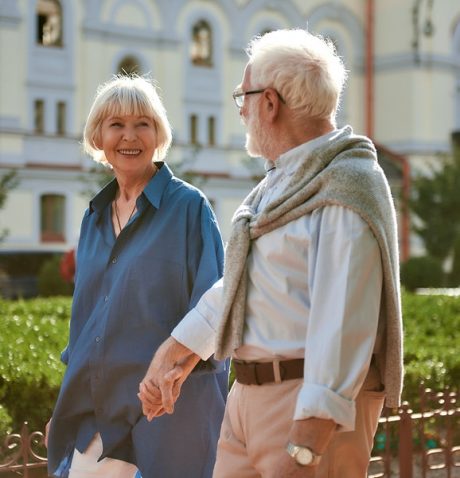
If you’re concerned about your balance or coordination,
there are 2 things you NEED TO KNOW.
Most people (and ironically, most doctors and health professionals) don’t know these two things... but they can have a HUGE impact on your quality of life. In this article, I’m going to walk you through these two important things.
And, I’m also going to show you the MOST EFFECTIVE, EASIEST, and GENTLEST way I’ve ever found (in my 25+ years as a Registered Kinesiologist) for preventing and reversing balance problems, building strength, and protecting yourself against dangerous falls and injuries.
THE #1 THING YOU NEED TO KNOW:
THE “HIDDEN” DANGER OF BAD BALANCE
Recent research shows that balance problems
and falling can lead to additional health complications(1)
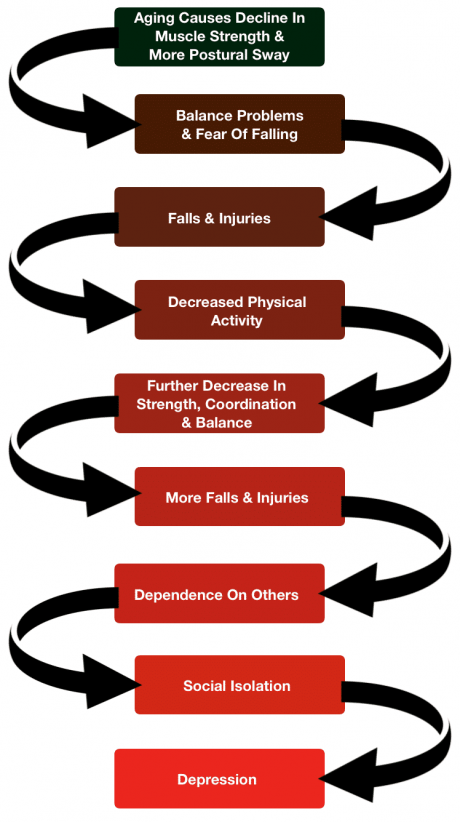
(2)
If you’re between 45 and 85, or you have concerns about your balance, or you’ve already sustained a fall, PLEASE READ THIS CAREFULLY:
Several studies have shown that impaired balance and falls can lead to more severe health issues and conditions - both physical and psychological, and can even lead to a downward health spiral(3)(4).
These studies found that:
- Aging (and certain injuries) can cause postural sway and a significant decline in muscle strength... (5)
- Which leads to balance problems and fear of falling... (5)
- Which leads to falls, injuries and more fear of falling... (5)
- Which leads to you doing less physical activity (because you’re afraid of falling)... (5)
- Which leads to further decrease and decline in muscle strength, coordination and balance (because these things all deteriorate without regular physical activity)... (5)
- Which leads to more falls and injuries (because your balance is worse than it’s ever been)...
- Which leads to dependence on others (because you can no longer rely on your own body)...
- Which leads to you wanting to isolate yourself socially (because you feel guilt and shame about being a burden to the people around you)... (6)
- Which can lead to depression. (6)
This quote comes from a 2014 balance and falling study entitled: Analysis of Core Stability Exercise Effect on the Physical and Psychological Function of Elderly Women Vulnerable to Falls during Obstacle Negotiation:
“Individuals with a history of falls have fears of repeated falls, depression, and anxiety, all of which lead to decreased physical activities. These negative experiences result in reduced physical capacity in terms of muscular strength, bodily flexibility, and coordination, rendering the affected elderly even more susceptible to falls in a vicious cycle.” (7)
That’s the bad news…
BUT HERE’S THE GOOD NEWS:
That very same 2014 study found that certain types of exercises…
...that are VERY GENTLE, VERY EASY, and require ONLY A FEW MINUTES A DAY…
...can:
- Improve your balance (8)
- Prevent falls (8)
- Prevent (and reverse) that entire negative downward health spiral we discussed above (8)
- Stabilize your core (8)
- Strengthen your legs (8)
- Increase your confidence (8)
- Reduce and remove your fear of falling (8)
- Create a positive, upward health spiral for you! (8)
BUT... here’s the key:
You have to do the right kinds of exercises.
You have to do the exercises that have been studied, researched, and proven to be highly-effective for improving balance.
Which leads us to...
THE #2 THING YOU NEED TO KNOW:
Most balance training programs don’t work
because they aren’t comprehensive enough (9)(10)
Because most doctors, physical therapists and fitness ‘gurus’ don’t take the time to review and carefully consider the latest research...
...most balance training programs are too narrowly focused, and only offer a few approaches to improving your balance. Most of these program look like this:
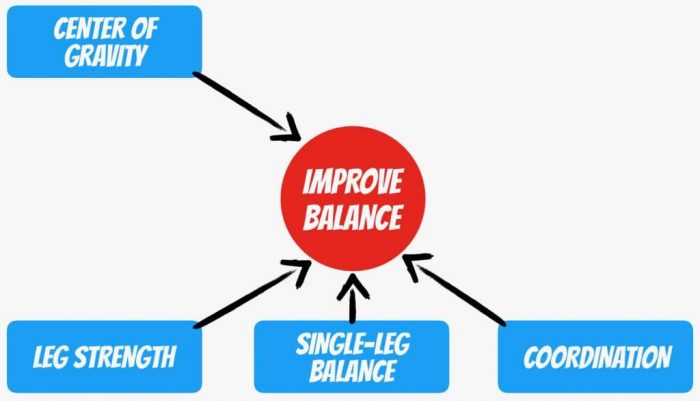
...And this is why most balance training programs don’t work - they aren’t comprehensive enough.
Because I spent so much time reviewing the scientific and medical research on balance and falling, I learned two important things:
- Good balance is the result of multiple different interconnected muscle groups, musculoskeletal systems, and even non-motor, cognitive functions, all working together simultaneously. In other words, strengthening the legs a little and practicing standing on one foot is not enough to improve your balance!
- Scientific and medical research has proven that there are multiple different methods that are highly-effective for improving balance and preventing falls.
Using these insights and everything else I learned reviewing the research, I created a balance training program that utilizes 10 different approaches, that all work together, in a cumulative fashion, to improve your balance, restore your confidence, and reduce and remove your fear of falling.
My program looks like this:
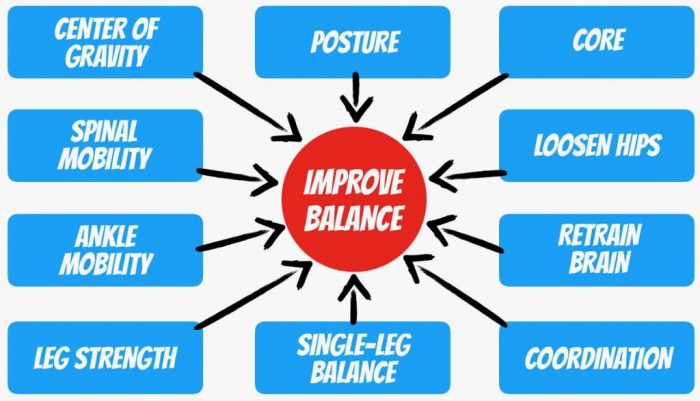
As you can see, my program is a lot more comprehensive and includes a lot more approaches to improving your balance. It’s not always true in life that more is better, but in this case, it is.
IF YOU’RE WORRIED my program looks TOO comprehensive, and that it will be difficult, complicated or time-consuming, don’t worry.
In spite of the fact that my solution is so comprehensive, the routine you’re going to learn in the program takes only 8 minutes (or less) each day to complete, and is so easy and gentle that virtually any person can do it, regardless of age, weight, fitness level, or flexibility.
In fact, you can do this program if you’re out of shape, you have very little flexibility, and even if you’ve never exercised a day in your life.
This sounds good, but...
there’s a problem
Let’s say you’ve (smartly) decided to stay physically active because you now know that limiting your activity could lead you into the negative downward health spiral we discussed above.
And let’s say you now understand that you must do the right kinds of exercises to improve your balance - those that strengthen your legs, stabilize your core, reprogram your body and brain to know where you are in your environment, and more.

How do I know which exercises to do? How many sets and reps should I do? What order should I do them in???
The problem is…
How do you find these particular exercises?
How do you find the research that reviewed and studied the effectiveness of these exercises?
How do you know what order to do the exercises in?
How do you know how many sets and repetitions to do?
How do you know if you’re really doing the exercises correctly?
How do you know what intensity you should use when you’re doing them?
HERE’S SOME MORE GOOD NEWS:
My name is Rick Kaselj and I’ve been a Kinesiologist and Pain and Injury Specialist for 25+ years. I’ve had LOTS of clients who’ve had balance problems, just like you, so… I finally decided to review ALL the research, and I created a special exercise program specifically for improving balance.
Can a simple, 8-MINUTE exercise routine
really accomplish all this?
In one minute I’m going to show you the simple, 8-minute, evidence-based exercise routine I created, that can:
- Improve your balance
- Prevent falls
- Prevent (and reverse) the negative downward health spiral we discussed above
- Replace your fears of falling and physical activity with confidence
- Strengthen your legs
- Stabilize your core
- Help you get back to doing the things you love in life
- Help you get back to doing the day-to-day things you need to do, and doing them YOURSELF, so you don’t have to depend on or burden other people
But first, there’s one more (big) problem we need to discuss, and that is:
Most people who buy exercise programs like this, don’t actually do them on a consistent basis.
As you can probably guess, if you don’t do the exercises on a consistent basis, you’ll get no benefits or positive changes in your life. (11)
SO… before I show you this 8-minute, balance-improving exercise routine...
I want to PROVE TO YOU that this routine is something that you will ACTUALLY STICK TO, and ACTUALLY DO ON A CONSISTENT BASIS…
...because that’s the only way it will have any value for you.
Here’s why you’ll actually
do this exercise program, consistently…
Life can be hectic.
Most people have a full schedule and don’t have the motivation to do long workouts.
No problem - this exercise routine only takes 8 minutes to complete.
Isn’t it a pain-in-the-butt to exercise when you have to:
- Change into special exercise clothes
- Drive all the way to the gym
- Fight the crowds for use of the machines and weights you need to use
- Take a shower
- Change back into your regular clothes
- ...And then drive back to work or home?
GREAT NEWS!... You don’t have to do *ANY* of that!
With this 8-minute exercise program:
- You don’t need a gym
- You don’t need to drive anywhere
- You don’t need to change into special exercise clothes
- You don’t need any expensive equipment
- You don’t even need to shower after you do the routine, because you won’t even break a sweat!
Here’s why you don’t need to be scared
of doing this exercise program…
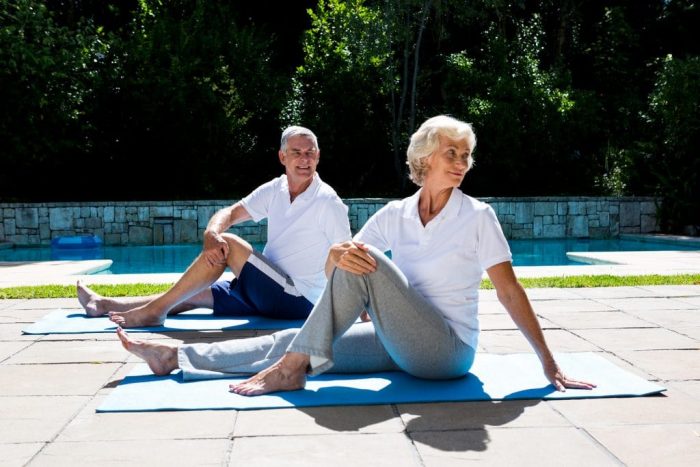
Are you worried you might be too old to do an exercise routine like this?
Are you worried you might fall or get hurt while you’re doing this routine?
Are you worried you’re too out-of-shape?
Are you worried you can’t do this because you’ve never really exercised consistently (or at all)?
Please don’t worry about any of this…
...I’ve taken all of it into consideration in designing the 8-minute, balance-improving exercise routine I’m about to show you.
- This exercise program was designed specifically for women and men between the ages of 45 and 85 who have balance problems, knowing full well that people in this group have different exercise and health needs and capabilities.
- The movements and exercises in this routine are extremely gentle, safe and easy on your joints.
- In this program, we give you four different stages of exercises - each is a different level of difficulty - easy, medium, intermediate and advanced. This allows you to start wherever you feel comfortable (most people start right at the beginning) and customize the program for gradual progression, so you are comfortable at all times. If the exercises become too easy for you, we also show you how to increase the challenge and difficulty so you make more progress.
- If you’re concerned about your balance, remember these exercises were created especially for people who have trouble balancing!
Two reasons you can feel confident that
this exercise program will work for you...
REASON #1: This program was designed using scientific and medical research.
I’ve been a Registered Kinesiologist and Pain and Injury Specialist for 25+ years. One of the lessons I’ve learned over and over is that pain, injury and rehabilitation programs that are based on conclusions from real scientific studies and medical papers produce better results for most people.
The 8-minute exercise program I’m going to show you on this page was designed using the conclusions from 16 different scientific research papers and studies, all of which are listed here for your reference:
- Choi J-H, Kim N-J. The effects of balance training and ankle training on the gait of elderly people who have fallen. Journal of Physical Therapy Science. 2015;27(1):139-142. doi:10.1589/jpts.27.139.
- De vries AW, Faber G, Jonkers I, Van dieen JH, Verschueren SMP. Virtual reality balance training for elderly: Similar skiing games elicit different challenges in balance training. Gait Posture. 2018;59:111-116.
- Eckardt N. Lower-extremity resistance training on unstable surfaces improves proxies of muscle strength, power and balance in healthy older adults: a randomised control trial. BMC Geriatrics. 2016;16:191. doi:10.1186/s12877-016-0366-3.
- Emilio EJM-L, Hita-Contreras F, Jiménez-Lara PM, Latorre-Román P, Martínez-Amat A. The Association of Flexibility, Balance, and Lumbar Strength with Balance Ability: Risk of Falls in Older Adults. Journal of Sports Science & Medicine. 2014;13(2):349-357.
- Granacher U, Gollhofer A, Hortobágyi T, Kressig RW, Muehlbauer T. The importance of trunk muscle strength for balance, functional performance, and fall prevention in seniors: a systematic review. Sports Med. 2013;43(7):627-41.
- Granacher U, Lacroix A, Muehlbauer T, Roettger K, Gollhofer A. Effects of core instability strength training on trunk muscle strength, spinal mobility, dynamic balance and functional mobility in older adults. Gerontology. 2013;59(2):105-13.
- Halvarsson A, Dohrn I-M, Ståhle A. Taking balance training for older adults one step further: the rationale for and a description of a proven balance training programme. Clinical Rehabilitation. 2015;29(5):417-425. doi:10.1177/0269215514546770.
- Kim M-K. The effects of trunk stabilization exercise using a Swiss ball in the absence of visual stimulus on balance in the elderly. Journal of Physical Therapy Science. 2016;28(7):2144-2147. doi:10.1589/jpts.28.2144.
- Ko D-S, Jung D-I, Jeong M-A. Analysis of Core Stability Exercise Effect on the Physical and Psychological Function of Elderly Women Vulnerable to Falls during Obstacle Negotiation. Journal of Physical Therapy Science. 2014;26(11):1697-1700. doi:10.1589/jpts.26.1697.
- Kristinsdottir EK, Baldursdottir B. Effect of multi-sensory balance training for unsteady elderly people: pilot study of the "Reykjavik model". Disabil Rehabil. 2014;36(14):1211-8.
- Kuptniratsaikul V, Praditsuwan R, Assantachai P, Ploypetch T, Udompunturak S, Pooliam J. Effectiveness of simple balancing training program in elderly patients with history of frequent falls. Clinical Interventions in Aging. 2011;6:111-117. doi:10.2147/CIA.S17851.
- Lee H-C, Lee ML, Kim S-R. Effect of exercise performance by elderly women on balance ability and muscle function. Journal of Physical Therapy Science. 2015;27(4):989-992. doi:10.1589/jpts.27.989.
- Lee I-H, Park S. Balance Improvement by Strength Training for the Elderly. Journal of Physical Therapy Science. 2013;25(12):1591-1593. doi:10.1589/jpts.25.1591.
- Lee K, Lee YW. Efficacy of ankle control balance training on postural balance and gait ability in community-dwelling older adults: a single-blinded, randomized clinical trial. Journal of Physical Therapy Science. 2017;29(9):1590-1595. doi:10.1589/jpts.29.1590.
- Lesinski M, Hortobágyi T, Muehlbauer T, Gollhofer A, Granacher U. Effects of Balance Training on Balance Performance in Healthy Older Adults: A Systematic Review and Meta-analysis. Sports Medicine (Auckland, N.z). 2015;45:1721-1738. doi:10.1007/s40279-015-0375-y.
- Wolfson L, Whipple R, Judge J, Amerman P, Derby C, King M. Training balance and strength in the elderly to improve function. J Am Geriatr Soc. 1993;41(3):341-3.
An important question to consider is:
“Have you ever seen, or even heard of any other balance training program that is based on that much scientific research?”
REASON #2: I’ve created more than 30 standalone exercise programs, and they work. Here’s proof from real people who’ve used my programs to eliminate pain, recover from injuries, and change their lives for the better:
Tammy D. Jones, IFBB Professional Bodybuilder, Cape Coral, FL
“My shoulder is 100% better after doing the program from start to finish. It’s as if nothing were ever wrong to begin with. I am so thankful to you. I was really scared there for a while. Thought my career was over, that I might need surgery because the pain kept getting progressively worse. I bought the Fix My Shoulder Pain program in January, and not even 2-3 weeks later I am completely functional. WOW. No pain at all, whatsoever.”
Disclaimer: Individual results may vary.
“After using your Plantar Fasciitis program, I noticed a difference by the second morning. I was able to get up out of bed without the immediate pain and stiffness I am used to experiencing in the morning. I am now able to walk 1.5 miles without pain during or after my walk. That is exciting! I was in constant pain before I started the program and now I am able to take walks with my husband, pain-free.”
Jennifer Dixon, Payroll Supervisor, CPP, Wenatchee, WA
Disclaimer: Individual results may vary.
Thomas Mcgowan, Retired Marketing Executive, Dublin, Ireland
“I am a 71 year old, a golf enthusiast, and had been experiencing sciatica type pain in my left hip for some time. Thankfully, by following your Unlock Your Hip Flexors program daily, I am now totally free of hip pain. Many thanks for your help!”
Disclaimer: Individual results may vary.
Shelley Watson, Carmel, CA
“Your exercises have changed my life. I have been in constant pain for 15 years.”
Disclaimer: Individual results may vary.
Tracy Walker, North Carolina
“I just wanted to say thank you for providing what I needed to resolve my hip problem! After following your exercises, I went through work all day with no pain and no pain medication. Yeah!! Thanks so much for a simple answer to a problem I have been dealing with for months.”
Disclaimer: Individual results may vary.
“I followed your Fixing Elbow Pain program and my elbow pain was practically gone in about 10 days. Great program! Thanks again.”
Michael Matlock, Birmingham, AL, Owner of Investment Advisory Business
Disclaimer: Individual results may vary.
This exercise program can also help you
lose weight, increase your energy, prevent injuries, protect you from pain, and more...
When you do the 8-minute exercise routine I’m about to show you on a consistent basis, you can also experience these additional benefits:
LOSE WEIGHT… BECAUSE YOU’LL BE BURNING MORE CALORIES (AUTOMATICALLY) THROUGHOUT THE DAY
In spite of it being very gentle, this exercise routine still helps to build new lean muscle mass. The more lean muscle mass you have, the higher your basal metabolic rate(12), which means you will burn more calories automatically, throughout the day.
INCREASED ENERGY
Contrary to what many people believe, exercising does not make you tired. Exercising actually creates energy in the body because your body needs this energy to handle(13) the additional demands the exercise is placing on your body. With more consistent exercise, you’ll be creating more energy in your body and you’ll begin to feel an overall increase in your energy levels!
PREVENT INJURIES AND IMPROVE COORDINATION
Many of the exercises in this routine are whole-body movements. Because these movements involve multiple muscle groups and multiple joints, it trains the different muscles and joints to coordinate and work better together. When your muscles and joints don’t have the benefit of this type of training, and are therefore less coordinated, this can cause injury(14), so this is an important protective measure.
IMPROVED FLEXIBILITY AND PROTECTION FROM CHRONIC PAIN
The movements and stretches we use in this exercise routine help strengthen your joints and increase your overall flexibility, both of which protect you against joint degeneration(15). Joint degeneration is the cause of many types of chronic pain, like knee pain, back pain, shoulder pain, hip pain, and more.
So, what exactly is this 8-minute
balance training program? And how can
YOU start using it too?
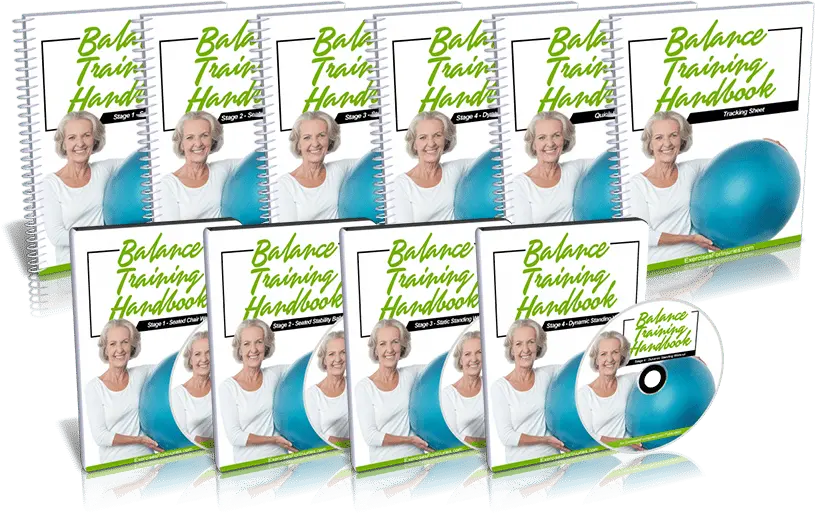
After seeing that many of my clients and students had balance issues and had sustained falls, some of which led to injuries, I set out to create an exercise program that could help improve balance and prevent falls, so people could leave their fears behind, and get their confidence, independence, and freedom back.
And as I explained above, I created this 8-minute exercise routine to be very easy-to-learn and do, on a consistent basis, so people ACTUALLY WOULD do it. I also used all the latest and relevant research to make sure the program would be EFFECTIVE too.
I call this new program: Balance Training Handbook.
Balance Training Handbook is a video exercise program you can do at home, completely on your own. It’s a simple program of easy and gentle movements that only require your body and a few inexpensive items (NO GYM REQUIRED), and the whole program can be done in just 8 minutes a day.
The videos in this program show you how to do every exercise perfectly, in exactly the right sequence, with exactly the right number of repetitions and sets, all laid out for you, in explicit detail.
Balance Training Handbook is a simple,
step-by-step system of gentle movements
and easy exercises that is highly-effective for improving balance and preventing falls, and
it only takes 8 minutes a day!
Why does this system work so well to help people improve their balance and prevent falls?
Because it’s based on real scientific research, and because it’s comprehensive and it’s easy.
It’s comprehensive…
...because it includes 10 different approaches to improving your balance and preventing falls, so no stone is left unturned. Because we attack the problem from so many different angles, and with so many different methods, your balance can’t help but get better!
It’s easy…
...because I’ve arranged the 10 different approaches into one super-simple routine that requires only 8 minutes of your time every day. A HUGE reason people don’t get results from exercise programs like this one is that they’re too complex, too time-consuming, and too difficult to do. Because my program is so easy, and takes so little time, you’ll find yourself actually WANTING to do it everyday, and LOOKING FORWARD TO DOING IT. And because you do it everyday, you’ll actually get the results you want! (And don’t worry - just because this program is easy to do and takes only 8 minutes a day, doesn’t mean it doesn’t work - it does work! This is why, as you’ll see below, I’m offering you a 60-day, 100% money-back guarantee with this program - I’m that confident!)
Here’s a quick look at the 10 different approaches you’ll have at your disposal in the Balance Training Handbook program:
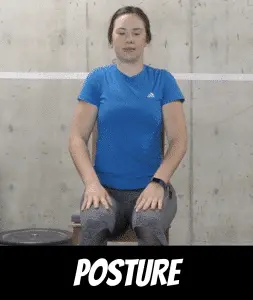
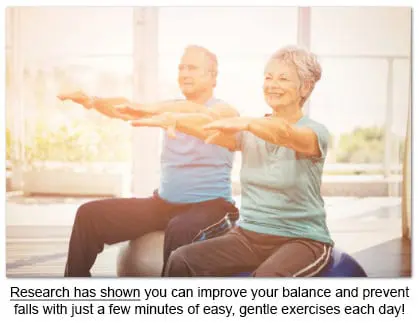
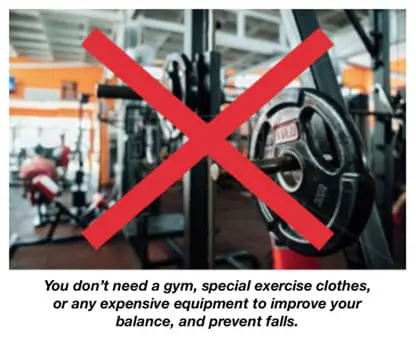
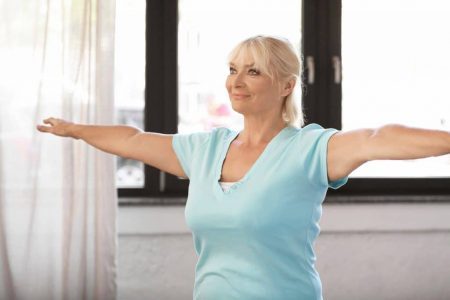
 “
“ “I am a 71 year old, a golf enthusiast, and had been experiencing
“I am a 71 year old, a golf enthusiast, and had been experiencing
 “I just wanted to say
“I just wanted to say 

